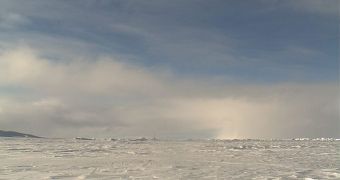According to the conclusions of a new study published in the latest issue of the top scientific journal Nature Geoscience, it would appear that perennial (or multi-year) ices in the Arctic and sub-Arctic regions first started developing around 44 million years ago, not 18 million years ago, as first thought.
This important investigation was led by expert Dennis A. Darby, who holds an appointment as an Earth sciences professor with the Department of Ocean, Earth and Atmospheric Sciences at the Old Dominion University, in Norfolk, Virginia.
The conclusions of his research – which pushes back the data of first perennial ice formation by more than 26 million years – are based on a newly-developed ice-aging technique. The approach is centered on studying iron oxide grains that have become trapped in multi-year Arctic ices, PhysOrg reports.
The investigator argues in his paper that iron oxides could have developed at their current locations only if they were surrounded by massive ice fields throughout the year. Currently, the Arctic experiences periods of ice recession (summer and autumn) and progression (winter and spring).
Results derived from this study have great practical value, because they can provide climatologists with an accurate window into the future. Thus, they will be able to predict with more certainty the effects that a warming Arctic will have on its ice sheets, and especially on multi-year ices.
Monthly statistics released by the US National Snow and Ice Data Center (NSIDC) over the past few years have determined that more perennial ices are melting at and around the North Pole each year. When ices are reformed during the winter, only yearly extents are replenished, not multi-yearly ones.
The conclusions of the new study clash with predictions stemming from other investigations, which suggest that average atmospheric temperatures were high enough 40 to 50 million years ago to melt all ices at the North Pole during the summer.
Some climatologists suggest that this is what will happen to the Arctic when the effects of global warming will become very pronounced. The whole goal of the movement to keep warming below two degrees centigrade is to avert losing all North Pole ices during the summer by 2030-2040.

 14 DAY TRIAL //
14 DAY TRIAL //